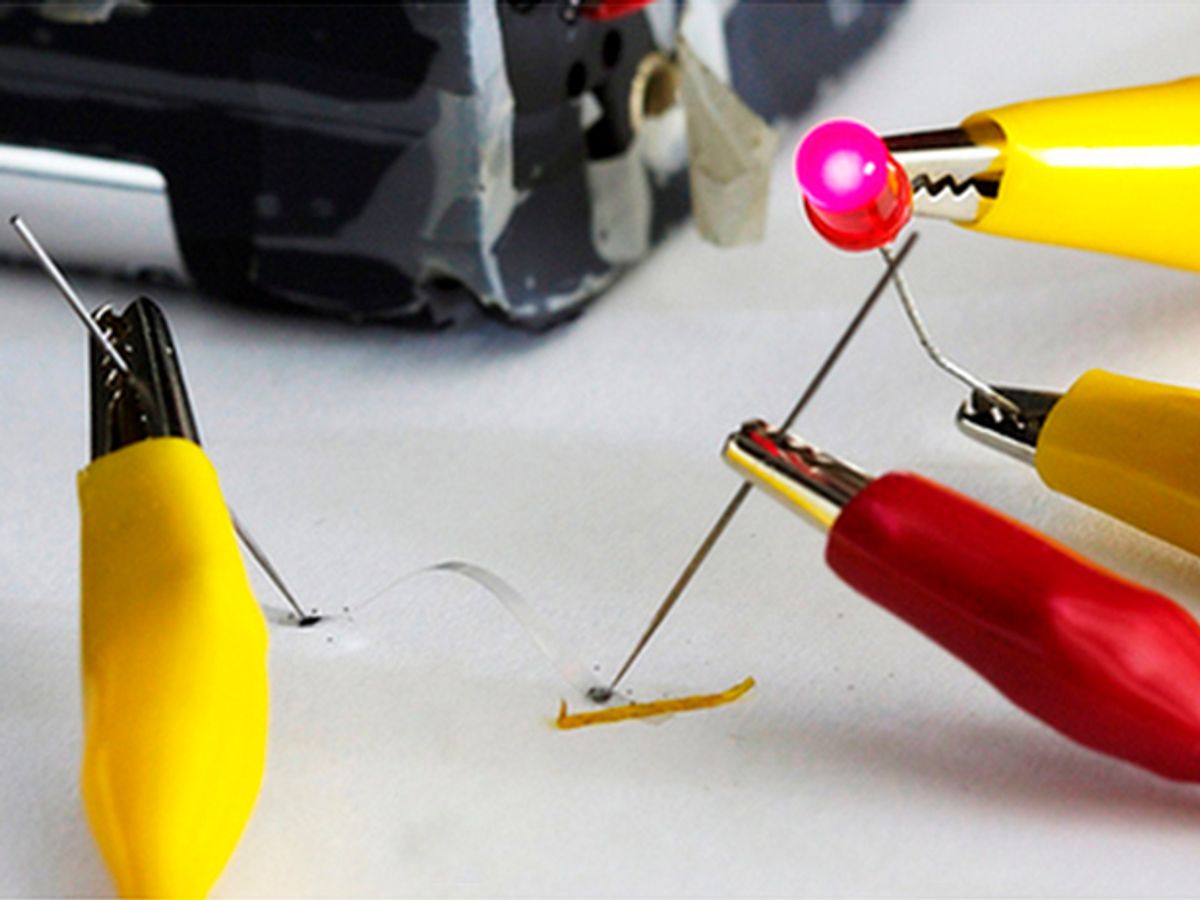Wearable electronics has been a hotly pursued research area for years now, but there has been precious little to show for all that effort in terms of electronic garments appearing on people’s backs. The reason for this is not entirely clear. Maybe it’s because the technologies that would enable fabric makers to weave in electronic components have been unwieldy, or maybe people just don’t feel that compelled to wear their electronic devices.
In any case, researchers have recently been able to leverage the properties of graphene to bring the long-promised future of wearable electronics closer to the present. We’ve already seen graphene woven into a yarn-like material that acts as a supercapacitor to power wearable electronics both here and here.
Now, an international research team from the University of Exeter in the U.K. and the Institute for Systems Engineering and Computers, Microsystems and Nanotechnology (INESC-MN) in Lisbon, the Universities of Lisbon and Aveiro in Portugal and the Belgian Textile Research Centre (CenTexBel) has managed to coat textile fibers with graphene in a way that turns them into electrodes.
In a press release announcing the breakthrough, Monica Craciun from the University of Exeter said:
This is a pivotal point in the future of wearable electronic devices. The potential has been there for a number of years, and transparent and flexible electrodes are already widely used in plastics and glass, for example. But this is the first example of a textile electrode being truly embedded in a yarn. The possibilities for its use are endless, including textile GPS systems, to biomedical monitoring, personal security or even communication tools for those who are sensory impaired. The only limits are really within our own imagination.
Just as important as researchers’ imaginations are the those of consumers, who to date have not been clamoring for these applications. Nonetheless, the techniques used for producing the graphene-based transparent electrodes are impressive.
In a paper published in the journal Scientific Reports, the international team says it employed chemical vapor deposition (CVD) to produce monolayer graphene. Typically, in a CVD process for producing graphene, it is grown on a copper substrate. The breakthrough here is that the team developed a way to remove the graphene from the copper sheet and transfer it onto the yarn while still maintaining all of the single-atom-thick carbon sheet’s attractive electronic properties.
“The methodology that we have developed to prepare transparent and conductive textile fibers by coating them with graphene will now open the way to the integration of electronic devices on these textile fibers,” said Ana Neves, currently a researcher at Exeter and previously a researcher at INESC, in a press release.
Dexter Johnson is a contributing editor at IEEE Spectrum, with a focus on nanotechnology.



